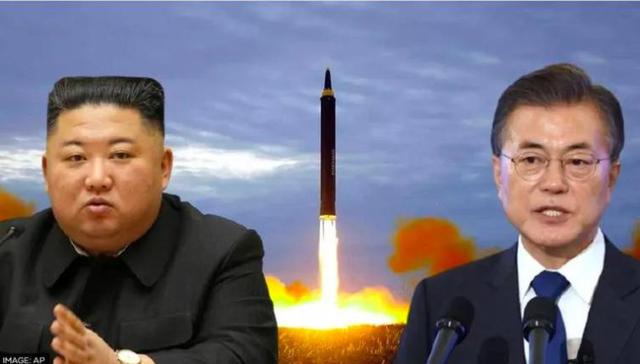North Korea’s launch ‘did not pose threat to US personnel’, confirms Indo-Pacific Command
Pyongyang’s latest missile launch did not pose an “immediate threat to US personnel or territory, or to our allies,” said the US Indo-Pacific Command.

South Korea on Sunday stated that North Korea fired a short-range ballistic missile Sunday toward its eastern seas in an escalatory move after a US aircraft carrier visited South Korea for joint military exercises over concerns about the North’s growing nuclear threat. In a statement on Sunday,
South Korea’s Joint Chiefs of Staff said that North Korea test-fired the missile from the western inland town of Taechon. Later, US’ Indo-Pacific Command declared that Pyongyang’s launch ‘did not pose threat to US personnel’/
The missile flew an estimated 600 kilometres (370 miles) at an altitude of 60 kilometres (37 miles). It then plunged into the waters off North Korea’s eastern coast prompting South Korea’s National Security Director Kim Sung-han to summon an emergency National Security Council meeting to discuss the risks posed by the launch, South Korea’s presidential office informed in a press document.
South Korea’s Foreign Ministry, in a separate statement, notified that its nuclear envoy Kim Gunn held telephone calls with Sung Kim, US President Joe Biden’s special representative for North Korea, and Funakoshi Takehiro, director-general for Asian and Oceanian affairs at Japan’s Foreign Ministry, to discuss trilateral cooperation after the North Korea’s missile launch.

LNorth Korea’s launch ‘did not pose threat to US personnel’: Indo-Pacific Command
Pyongyang’s latest missile launch did not pose an “immediate threat to US personnel or territory, or to our allies,” said the US Indo-Pacific Command in its statement. Although, the US military reiterated the destabilizing impact that North Korea’s nuclear weapons and missile programs pose on its regional partners.
North’s missile launch came as the US Navy’s nuclear-powered aircraft carrier USS Ronald Reagan and its strike group sailed to South Korea for a joint military exercise aimed at strengthening defences against the North Korean nuclear threats. For the first time in four years, the USS Ronald Reagan (CVN-76) made a port call to the Republic of Korea as it arrived on the Korean peninsula.
RECOMMEND STORIES
- Royal Challengers Bengaluru Clinch Maiden IPL Title with Thrilling 6-Run Win Over Punjab Kings
- Remembering Ratan Tata: A Visionary Leader and Compassionate Humanitarian
- National College Colors Day – September 2, 2024: history
- Bison-ten Yell Day – September 2, 2024: history, FAQs
- National Lazy Mom’s Day – September 6, 2024
The Ronald Reagan Strike Group’s visit is of strategic importance to the US and Republic of Korea relationship and is a clear and unambiguous demonstration of US commitment to the Alliance,” Rear Adm. Buzz Donnelly the strike group’s commander said in the statement to USNI.
“We’re excited to return to Busan. Our presence and commitments to the Republic of Korea and the Indo-Pacific region are not new, and visits like this are part of our routine operations in the region that have helped maintain peace for more than 70 years. Before it sailed to South Korea, the Reagan strike group held military drills with the Japan Maritime Self Defense Force (JMSDF) destroyer JS Amagiri (DD-154).








